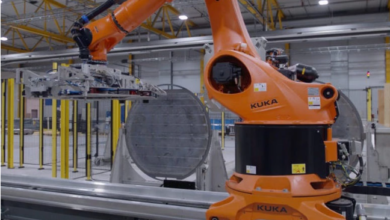Shape and SSAB partner on green steel for auto applications
SSAB aims to deliver fossil-free steel to the market commercially by 2026.

Shape Corp. will be the first tier-one automotive supplier to market with fossil-free steel crash management and body structure systems under a new agreement with SSAB, a leading producer of advanced high-strength steel (AHSS).
Shape to be the 1st automotive supplier to market with fossil-free steel body structure parts in partnership with SSAB.
Shape will be testing SSAB’s fossil-free steel, the first steel product made of hydrogen-reduced sponge iron utilizing HYBRIT technology, for use in automotive applications. Shape Corp. is setting an aggressive course to offer products made with this innovative material to provide green steel, a lightweight alternative for OEM body structure components that aligns with Shape’s own carbon neutrality goals.
SSAB works with iron ore producer LKAB and energy company Vattenfall as part of the HYBRIT initiative to develop a value chain for fossil-free iron- and steel production, replacing the coking coal traditionally used for iron ore-based steelmaking with fossil-free electricity and hydrogen. This process virtually eliminates carbon dioxide emissions in steel production.
Shape has pledged to reduce its global carbon emissions 30% by 2030 and to be fully carbon-free by 2035. Shape aims to be carbon-free in its production and will reduce end-user carbon emissions through lightweighting of the products Shape provides to its customers, mitigating climate change effects.
Mark White, president and CEO of Shape Corp, said, “Our long-standing partnership with SSAB is built on years of collaboration and mutual respect between our companies. I am extremely excited to partner with SSAB to commercialize their new fossil-free Hybrit steel technology and to be first to market in crash management and body structure applications for our customers.”
Martin Lindqvist, President and CEO at SSAB, said, “Demand for fossil-free steel is increasing, which is one of the reasons for SSAB to bring forward its green transition with the ambition to largely eliminate carbon dioxide emissions around 2030.”
